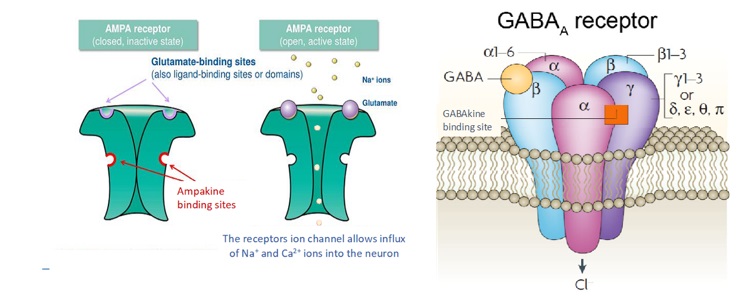In addition to orthosteric or agonist binding sites, neurotransmitter receptor proteins also may contain an adjacent, auxiliary site termed an “allosteric” binding site.

Neuromodulators are drugs that do not act directly at the neurotransmitter binding site, but instead act at these allosteric binding sites. They can enhance (Positive Allosteric Modulators – “PAMs”) or reduce (Negative Allosteric Modulators – “NAMs”) the actions of neurotransmitters at their orthosteric, primary receptor sites. Neuromodulators have no intrinsic activity of their own. We have coined the terms “AMPAkines” and “GABAkines” to refer to drugs that act as PAMs at the AMPA and GABAA receptors, respectively. As can be seen in the two illustrations, AMPAkines and GABAkines bind to sites adjacent to the orthosteric neurotransmitter binding site.
By way of example, as can be seen in the illustration below, when glutamate is applied to a neuron, a rapid, but brief, depolarization occurs, leading to an increased excitability of this cell. When this procedure is repeated in the presence of an AMPAkine, the depolarization and excitability is greatly enhanced.

